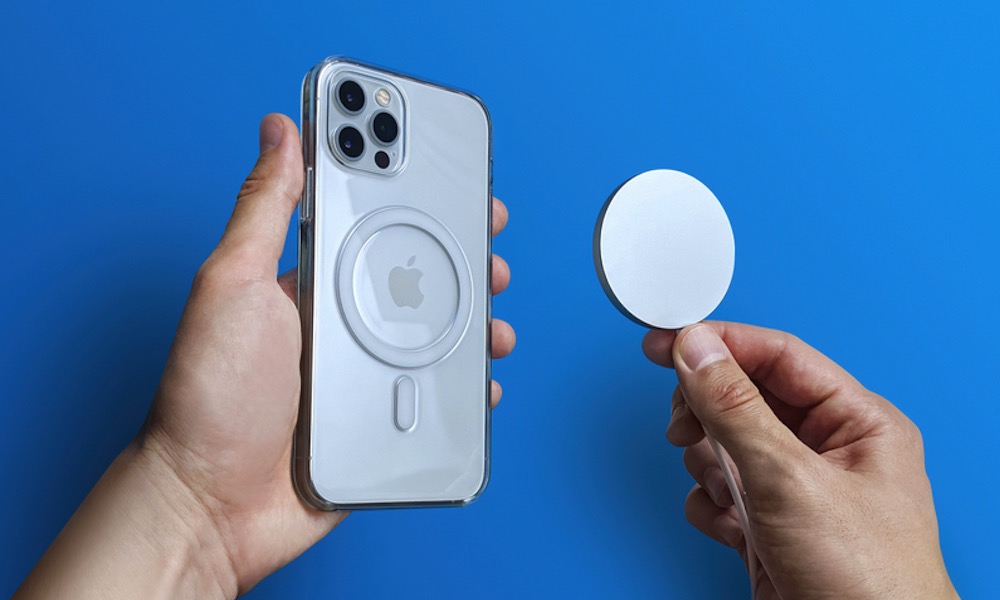The ‘iPhone 13’ Will Pack in a Larger MagSafe Charging Coil (and Stronger Magnets)
 Credit: Mr. Mikla / Shutterstock
Credit: Mr. Mikla / Shutterstock
Toggle Dark Mode
The debut of MagSafe charging with last year’s iPhone 12 lineup is one of the most significant changes to come to Apple’s accessory ecosystem since the introduction of wireless charging back in 2018, and now it looks like this may just be the start of something bigger.
While it was a given that this year’s iPhone lineup would continue to support MagSafe, in a video at EverythingApplePro, leaker Max Weinbach suggests that the iPhone 13 may feature an even larger wireless charging coil, along with a stronger ring of magnets.
If true, this could simply be designed to provide better heat management, since a larger coil would offer a wider surface area to dissipate the heat that’s generated from a high-wattage wireless charger. However, it could also allow for potentially faster charging speeds.
iPhone 13 with Faster Charging
As things stand right now, a true MagSafe charger can offer wireless charging speeds of up to 15 watts, while normal Qi chargers that offer “MagSafe-compatible” attachment still cap out at the standard 7.5 watts.
However, even at a 15W power output, MagSafe charges at about half the speed of a wired 20W connection, since inductive charging always results in some power loss. MagSafe eliminates as much of this inefficiency as possible, but Apple still can’t change the laws of physics.
Hence, a higher-wattage charging coil would allow MagSafe charging to more closely approach the same speeds as wired charging — something that’s going to be essential if Apple eventually intends to create the portless iPhone we’ve been hearing rumours about.
Apple would need to build a solution that would exceed 20 watts of inductive charging current if it hopes to match the current USB-C Fast Charging standards, but this could be a step in that direction.
The company also likely has at least some sense of how many iPhone customers actually care about faster charging speeds. With the lone exception of the iPhone 11 Pro lineup, Apple has never included more than a 5W adapter in the box, leaving customers to supply their own if they wanted faster charging.
Last summer, Apple sent out a survey to ask some customers about what they do with their USB chargers, and while we still believe it had at least something to do with removing accessories from the packaging, it would have given them a pretty good read on people’s charging habits.
After all, for users who only charge their iPhone on their bedside table at night, a 7.5W wireless charger, or even a 5W USB charger will be more than adequate. However, Apple also doesn’t want to fall too far behind its competitors, and the race toward even faster wireless charging has been ongoing for years.
Reverse Wireless Charging
We’ve been hearing for a couple of years now that Apple has plans for reverse wireless charging — a feature that would allow the iPhone battery to supply wireless charging power to other devices like AirPods.
While this has yet to materialize, there have been hints that it almost came to the iPhone 11 or iPhone 12, but had to be scrapped for whatever reason.
Last month, however, Bloomberg’s Mark Gurman hinted that it could come to the iPad first, as part of a new MagSafe wireless charging system for the tablet-sized devices.
According to Gurman, the next-generation iPad Pro would switch to a glass back, similar to the iPhone, which would allow inductive wireless charging current to pass through, but would also include the ability to charge your iPhone directly from your iPad, with the ability to link the two up using the corresponding MagSafe rings.
Of course, with its larger battery — and larger surface area — it makes sense that reverse wireless charging would come to the iPad first. In fact, you can already use your iPad Pro to charge up your iPhone with a USB-C to Lightning connector, so it’s not even that much of a stretch.
However, this could also explain the need for a larger coil and stronger magnets. The larger coil may be required to match what Apple eventually plans to bring to the iPad Pro, and the stronger magnets would ensure a more sturdy attachment between the two devices.
Imagine being able to simply dock your iPhone 13 onto the back of your iPad Pro and knowing that it could both charge up and stay securely in place while you’re carrying it around.
[The information provided in this article has NOT been confirmed by Apple and may be speculation. Provided details may not be factual. Take all rumors, tech or otherwise, with a grain of salt.]






